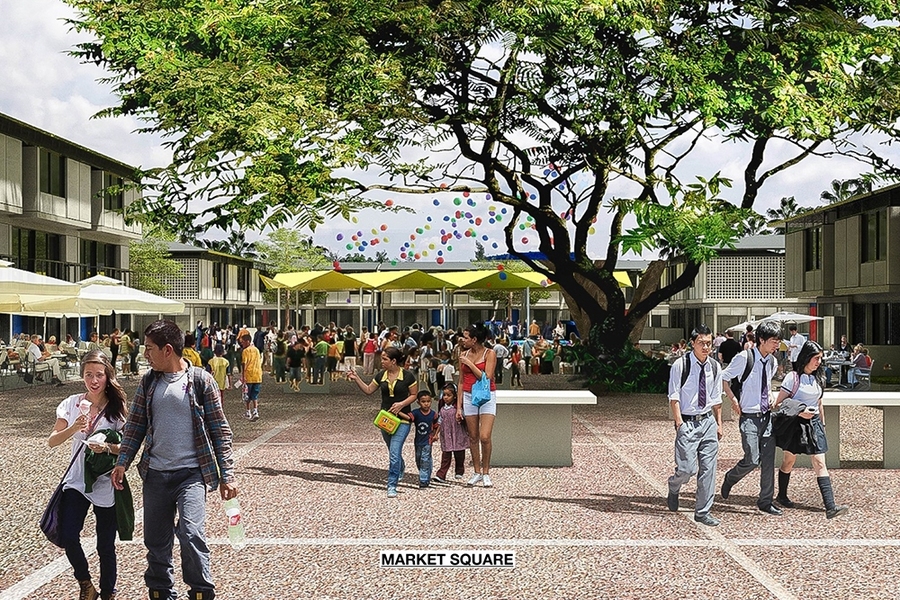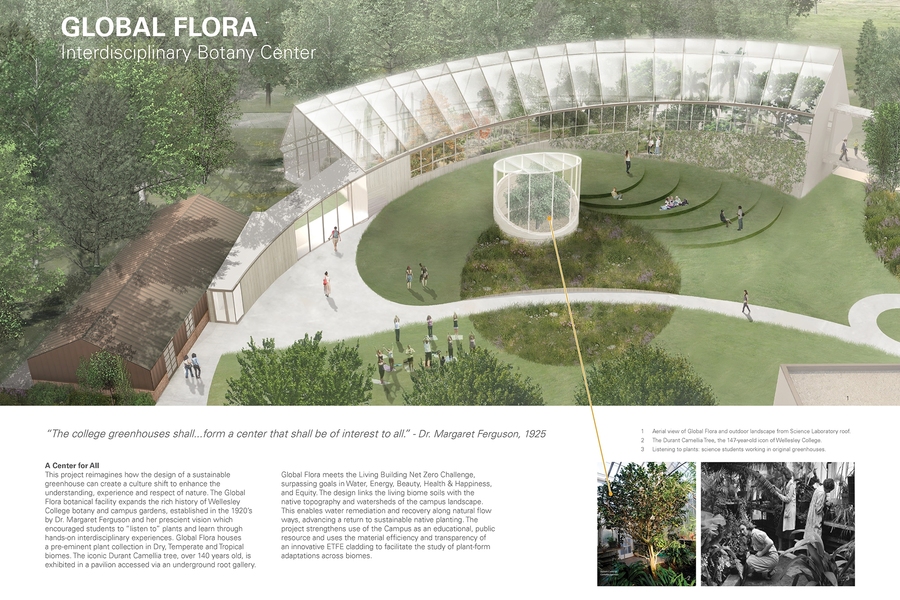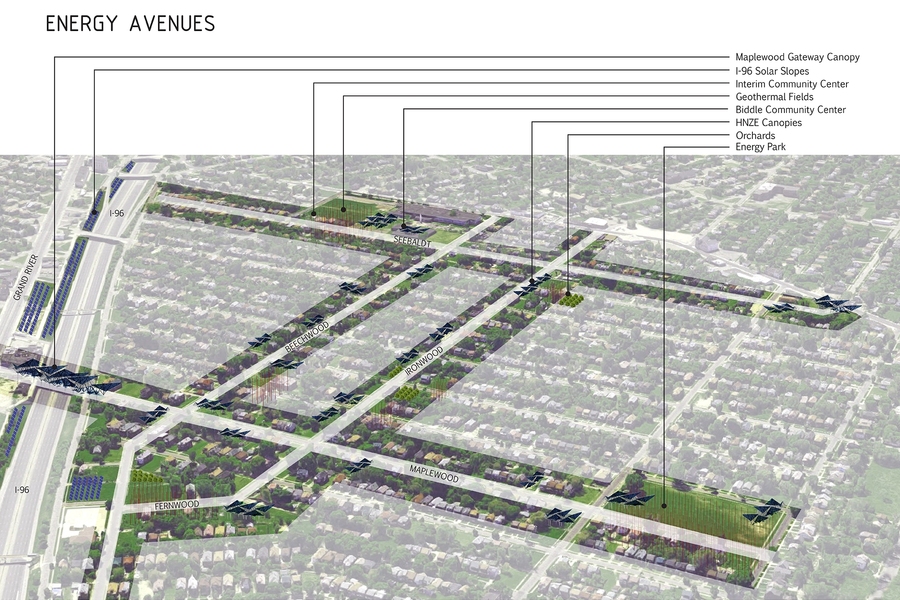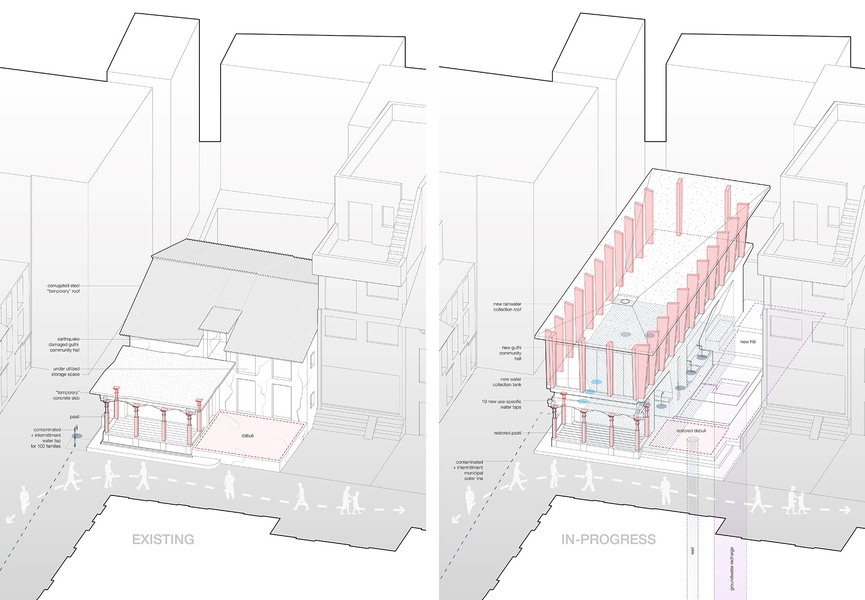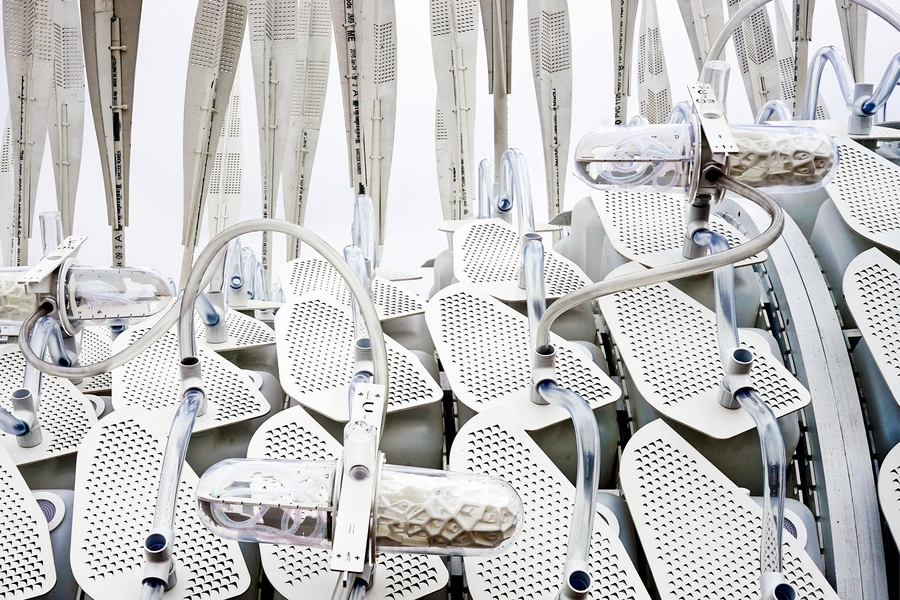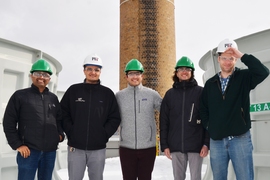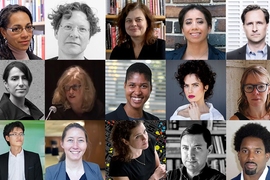Three projects led by MIT faculty — a greenhouse in Massachusetts heralded as a “virtuosity of integration;” a plan to weave together working and living in a neighborhood in Cartagena, Colombia; and an earthquake-resistant public building that doubles as an emergency shelter in Thecho, Nepal — have been recognized for forward-thinking excellence in this year’s LafargeHolcim Awards competition.
Sponsored by the LafargeHolcim Foundation for Sustainable Construction, the annual international competition recognizes “innovative projects and future-oriented concepts” in sustainable design in fields including architecture, landscape architecture, and urban design.
Two projects led by MIT alumni were also singled out for honors from a field of more than 5,000 submissions. MIT-related projects received recognition in three of the competition’s five global regions.
The Global Flora Botanical Conservatory
Sheila Kennedy, a professor in the Department of Architecture, and her firm Kennedy and Violich Architecture (KVA) received a Bronze award in the North America section of the competition for the design of the Global Flora Botanical Conservatory at Wellesley College in Wellesley, Massachusetts. The interdisciplinary project was carried out in collaboration with Kristina Jones, director of the Botanical Gardens at Wellesley College, and Cathy Summa, director of Wellesley’s Science Center.
The project’s architecture integrates innovative passive and active sustainable systems that aim to meet the Net Zero Water and Net Zero Energy criteria of the Living Building Challenge, the most rigorous contemporary standards for measuring sustainable design. The elegant curved form of the Global Flora Conservatory follows the east-west arc of the sun to maximize solar heat gain in winter. In summer, the architecture’s environmentally responsive skin allows the biomes to be cooled entirely through natural ventilation.
“The Global Flora project is designed in section. The need to accommodate different tree heights produces a varying interior space which plays with the configured ground of the site’s topography,” says Kennedy. “This offers different spatial experiences of plant form that are slowly revealed as people move through the biomes.”
An Interactive Sensor Platform integrated in the Global Flora project provides real-time air, water, soil, and energy data, expanding public education and scientific research for on-site and online users around the world.
A plan for affordable housing in Colombia
Adèle Naudé Santos, professor and former Dean of the MIT School of Architecture and Planning, and Débora Mesa, research scientist in the Department of Architecture, were awarded an Acknowledgment prize in the Latin America section of the competition for a plan for an affordable-housing neighborhood with integrated workspaces in Cartagena, Colombia.
Weaving together working and living spaces into a neighborhood, the project promotes community building, enhanced livelihoods for its inhabitants, and social interaction, within an urban plan designed to maximize shading. The regional jury reported an exceptionally well-resolved project, citing “a richness of interpretation and a level of detail ripe for implementation.”
At MIT, Santos and Mesa co-taught an architectural design workshop, A New Neighborhood: Cartagena, Colombia, in which students from the Department of Architecture developed design proposals for an affordable housing neighborhood with integrated workspace. This workshop was part of a broader research collaboration with Mario Santo Domingo Foundation that has been examining urban resilience for low-income housing. Santos will exhibit this work as part of the Norman B. Leventhal Center for Advanced Urbanism’s third biennial theme on affordable housing in 2018.
A multifunctional space for urban Nepal
The MIT Urban Risk Lab received an Acknowledgment prize for the Asia Pacific section of the competition for an innovative renovation and repurposing of a community space damaged in the 2015 earthquake that devastated Nepal.
The team includes Miho Mazereeuw, associate professor of architecture and urbanism in the Department of Architecture, research scientists David Moses and Aditya Barve, research associate Larisa Ovalles, and graduate student Hugh Magee. Moses, Barve, and Ovalles are alumni of the Department of Architecture.
For their project, the team redesigned a paati — a type of small, open-air pavilion commonly found in Nepali neighborhoods — in Thecho. The new, multifunction building weaves together a paati’s traditional functions, such as hosting community activities and offering daily relief from sun and rain, with additional features and preparedness planning.
During normal times, the building will support a variety of public functions, such as a workshop and community hall for women entrepreneurs, and an outdoor washing and gathering space. In a disaster, the earthquake-resistant structure can serve as an emergency shelter and a source of safe, clean water.
Alumni honors
Two alumni of the School of Architecture and Planning led teams that also were honored by the foundation in the North America awards. Transdisciplinary design collaborative studio[Ci], based in Detroit and directed by Constance C. Bodurow, SMarchS ’91 MCP ’91, received a Gold award for its comprehensive neighborhood planning in Detroit.
“Taking the pocket vacancies normally characterized as the biggest problem in Detroit, the design turns them into an opportunity to create a compelling sustainable neighborhood,” the jury said in a statement.
Terreform ONE, cofounded by Mitchell Joachim PhD ’06, received an Acknowledgement prize for a modular-design farm for edible insects in New York City.
According to the jury: “The project should be seen as a provocation to the status quo of meat production, which is carbon intensive.”
The LafargeHolcim competition proceeds in two stages. In the regional phase, winning projects are drawn from five global regions: Europe, North America, Latin America, Middle East Africa, and Asia Pacific. In the global phase, which commences later this year, the 15 projects that receive the Gold, Silver, or Bronze Awards in the regions — including the projects from Kennedy and Bodurow — automatically qualify for consideration for LafargeHolcim Global awards.
